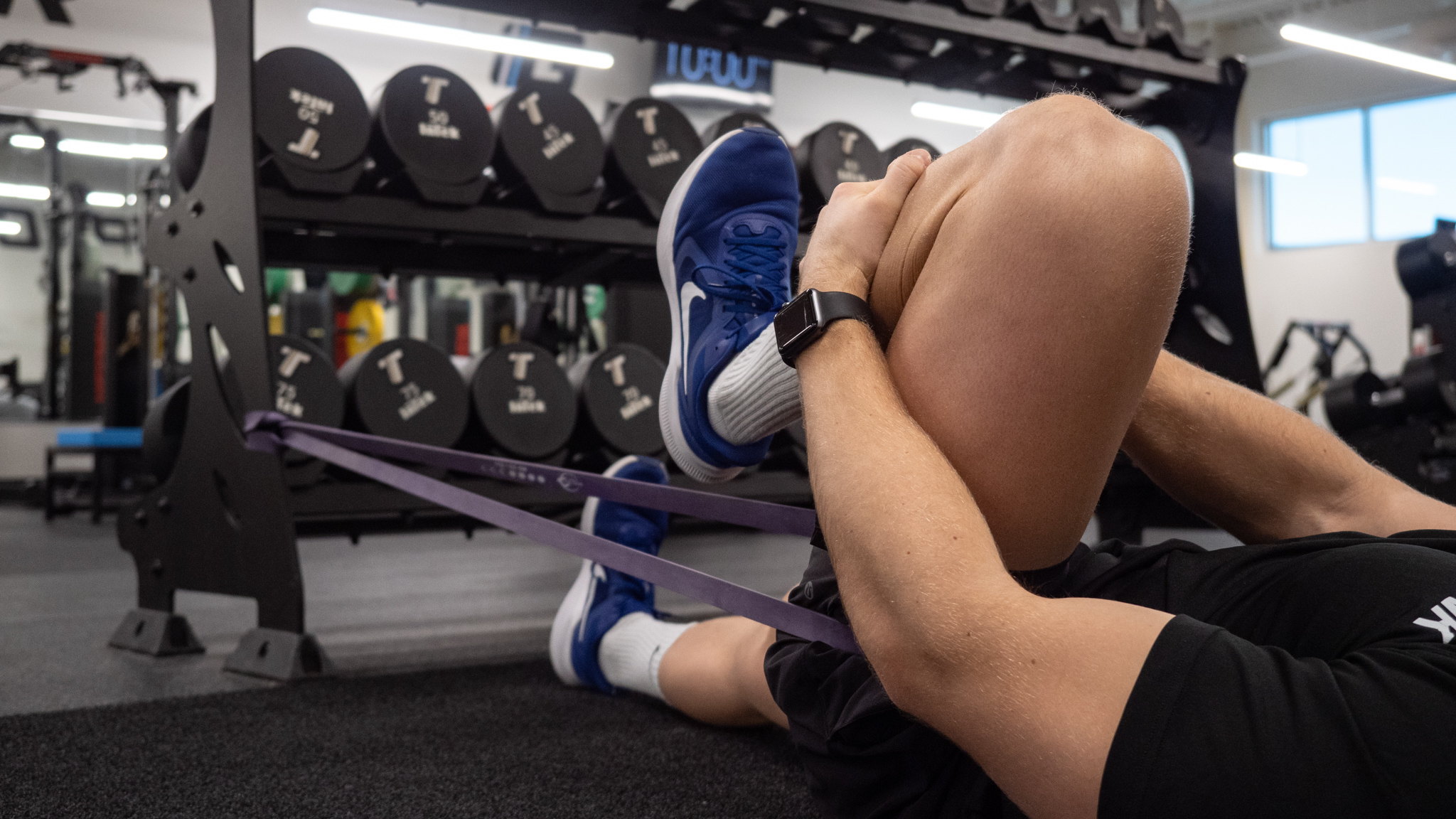It is common for many hockey players to have chronically tight hips. The skating stride begins at the hip and due to the repetitive pattern of skating and ample amounts of time spent in a hip flexed position, this causes stress. RINK Testify Performance has the solutions for you.
[ 1 – Stride Length ]
o MOBILITY = Adductor Rockback x 2 minutes
o STABILITY = Adductor Lift-Off x 10 each side with 3 second hold
The skating stride is the combination of 3x movements of the hip creating a unique demand on the hip (extension, abduction, external rotation). Because the skating stride requires high amounts of range of motion from so many different movements of the hip, there are multiple opportunities for things to go wrong and negatively impact your skating ability.
The adductor, more commonly known as the groin, is a group of muscles than commonly become tight due to high volumes of skating – the groin muscles constantly have to decelerate the leg as the athlete skates at high speeds which can increase tension and reduce tissue quality in this group of muscles; lengthening this tissue will be key to improving your stride length.
[ 2 – Stride Depth - Ankle ]
o MOBILITY = Toes Elevated Soleus Stretch x 2min
o STABILITY = Knee Over Toe Split Squat x10 each side with 3 second hold
Stride depth is determined by how much you can flex your knees/hips/ankles and will have a direct impact on your stride length.
Quite simply, more stride depth = longer stride length = better opportunity to be a faster skater.
The ankle can be a big issue with stride depth; the skating boot impairs function of the ankle joint and can create a very stiff joint over time. This can limit something called dorsiflexion aka how far your knee can go over your toe. When players have stiff ankles, the function of their knee & hip are often negatively impacted.
[ 3 – Stride Depth - Hip ]
o Supine Banded Hip Flexion Stretch x 2 minute
o Psoas Lift Half Kneel x10 each side with a 3 second hold
o Another important aspect of stride depth is the degree to which an athlete can flex their hips.
o Hockey players often lack range of motion in this movement pattern due to numerous factors such irritated static structures in the hip (labrum, joint capsule) or soft tissue restrictions due to inadequate rest & recovery and lack of exposure to other movements in different planes of motion (ex: high quality off-ice strength training)
TIPS & TRICKS!
o Be active; alternating periods of intense contraction followed by periods of relaxation. Do not just hang out. Quality > quantity.
o Have intent; don’t worry so much about the time spent in a stretch or reps completed on an exercise, focus more on putting forth maximum effort & intent.
o Be consistent; build these into your daily routine so that they are completed 2x per day to create changes in tissues and positions.
.jpg)
.jpg)
